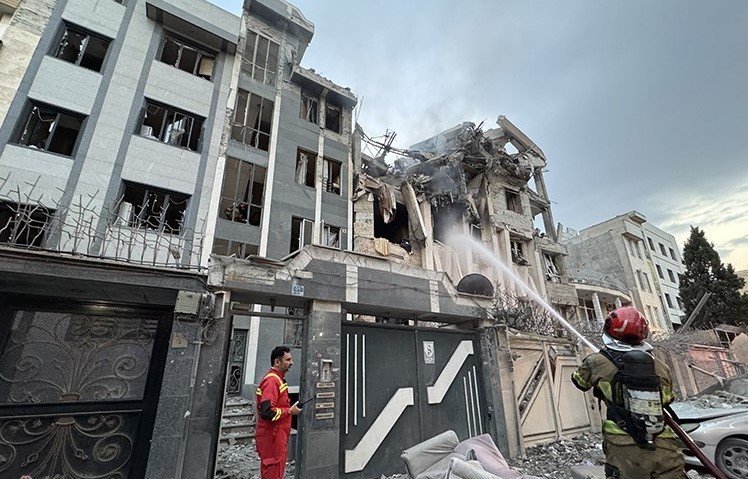Tehran’s mayor says residents hit by Israeli airstrikes will get $88 per square meter to rebuild. That’s barely a tenth of what they need—and the silence outside the capital is even louder.
A Token Offer After a Devastating Blow
When Israeli missiles struck the Iranian capital in June during Operation Rising Lion, entire city blocks in Tehran’s west were reduced to mangled concrete and ash. Now, the Iranian government is offering to help—but barely. Mayor Alireza Zakani has proposed a compensation cap of 80 million Iranian rials per square meter, or just $88, for families needing to repair their bombed-out homes.
That figure, reported by Iran International, a UK-based outlet critical of the regime, falls far short of what’s needed. Local real estate experts say the average price to build or repair housing in Tehran stands at around $1,000 per square meter—more than ten times what the government is offering.
For many residents, the proposal feels like an insult piled on top of trauma.
Disbelief and Discontent From the Rubble
In Tehran’s Evin neighborhood, where one of the deadliest missile strikes hit, families have been camping in what’s left of their courtyards. Some are still trying to retrieve personal belongings.
“Eighty-eight dollars? What am I supposed to do with that—buy a new front door?” said Mahnaz R., a teacher who lost the roof over her living room.
Anger isn’t confined to living rooms and streets. On Iranian social media, despite tight censorship, users have posted screenshots of real estate listings showing average rebuild costs, highlighting just how out of touch Zakani’s offer seems.
One short tweet, now viral, simply read: “Is this a joke or our lives?”

Residents Outside Tehran Get Nothing—Not Even a Mention
As grim as the offer may be for Tehran’s residents, it’s more than people elsewhere have heard. According to Iran International, no compensation plan has been announced for victims of Israeli strikes in provinces like Isfahan or Kermanshah, which also suffered infrastructure damage during the June offensive.
So far, not a single cabinet official or regional governor has gone on record about helping these communities.
That silence stings, especially in towns like Shahin Shahr near Isfahan, where several drone parts fell through roofs and damaged a school compound.
“They forget we exist unless it’s time to vote,” muttered a local baker interviewed by a Persian-language satellite channel.
The Math Doesn’t Add Up—Even for the Capital
The compensation package becomes even more dubious when you run the numbers. Iran’s Ministry of Roads and Urban Development itself admitted that about 3,500 housing units in Tehran were damaged during Operation Rising Lion.
Assuming the average size of each damaged unit is 100 square meters, the government’s proposed reimbursement would only offer around $8,800 per household—against a likely repair bill exceeding $100,000.
Here’s a basic comparison of compensation vs. real market costs:
| Item | Proposed by Mayor Zakani | Real Market Estimate |
|---|---|---|
| Compensation per square meter | $88 | $1,000 |
| Average apartment size | 100 sq. m. | 100 sq. m. |
| Total payout per family | $8,800 | $100,000+ |
| Shortfall | $91,200 | — |
Even assuming currency volatility, inflation, and discounts for older buildings, the gap is staggering.
Why So Little, So Late?
Iran’s economy isn’t exactly in great shape—sanctions, mismanagement, and internal corruption have left public coffers gasping for air. But critics say that hasn’t stopped the regime from funding military operations across the region or sending money to proxies in Lebanon, Syria, and Yemen.
“You always find money for missiles, but never for walls and ceilings,” said a Tehran University economics professor who requested anonymity for fear of reprisal.
The professor added that offering such a low amount is likely aimed at deflecting blame without committing real resources.
-
The annual budget of the Islamic Revolutionary Guard Corps exceeds $5 billion.
-
Meanwhile, public housing repair budgets across Iran were cut by 30% this fiscal year.
Hidden Negotiations and Shadow Deals
One theory circulating among local journalists is that Tehran’s city government may be trying to offload the cost of rebuilding to private contractors with close ties to regime loyalists. Rumors suggest that selected real estate firms are already bidding for reconstruction permits in neighborhoods like Vanak and Narmak.
There’s also growing suspicion that the crisis might be used as a cover for “redevelopment”—a code word many Iranians associate with gentrification and forced relocations.
“The real compensation will go to developers, not victims,” a former housing ministry official told Iran International.
Emotional Fallout and Broken Trust
Beyond the material losses, the government’s response is stoking deeper psychological wounds.
Families already traumatized by the airstrikes now feel abandoned by their own leaders. Support groups have sprung up in western Tehran, where residents are sharing grief—and tips on how to survive the sweltering summer in half-destroyed homes.
“This isn’t just about bricks and money,” said a local imam in Shahrak-e Gharb. “It’s about whether the state even sees us anymore.”
One elderly woman in her 70s said she’s stopped waiting for help.
“I lived through the revolution, the Iran-Iraq war, the pandemic, and now this,” she said. “At some point, you realize—you’re on your own.”
